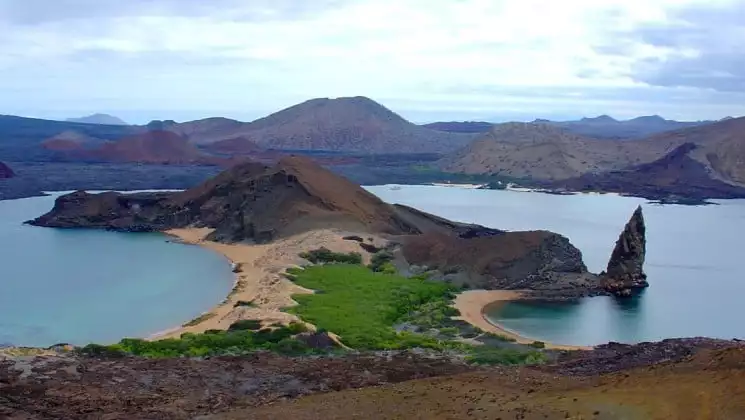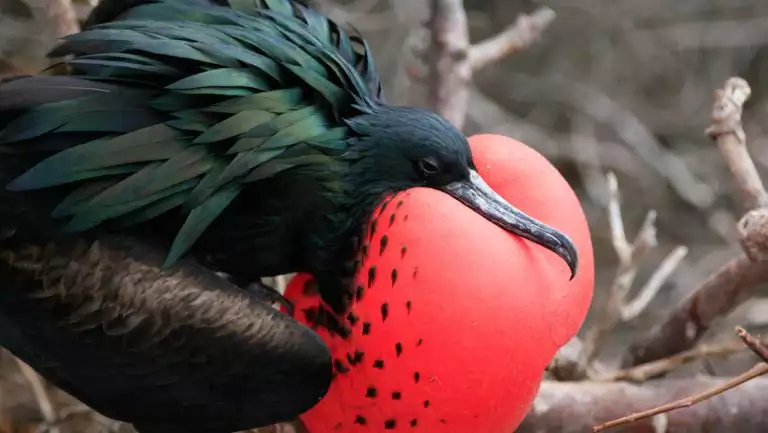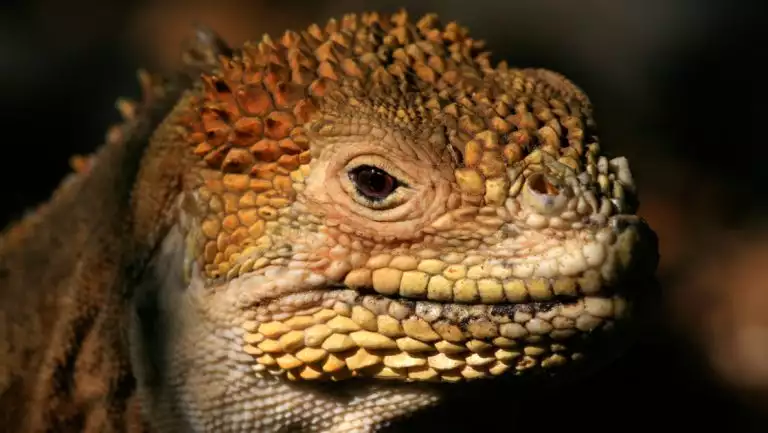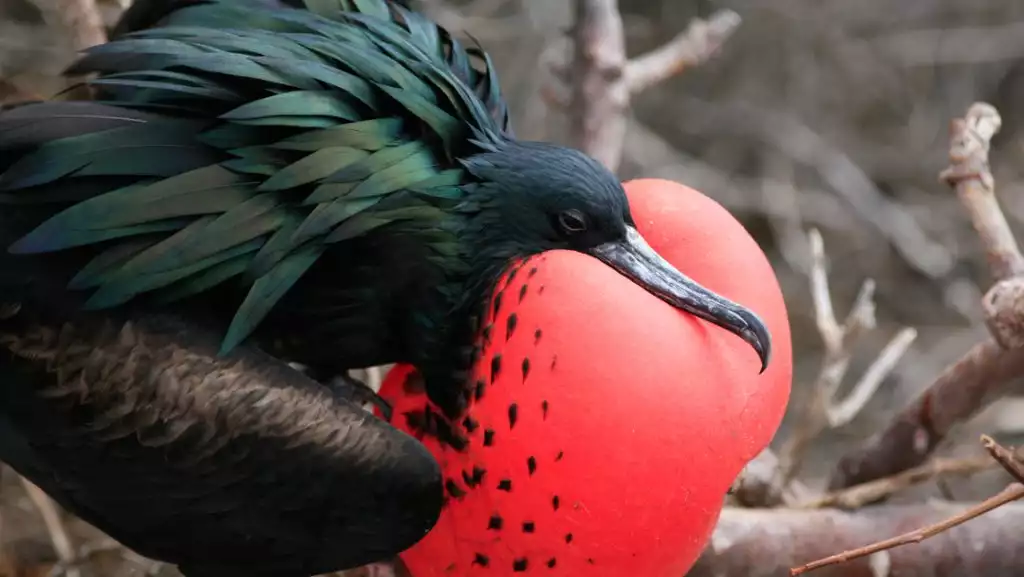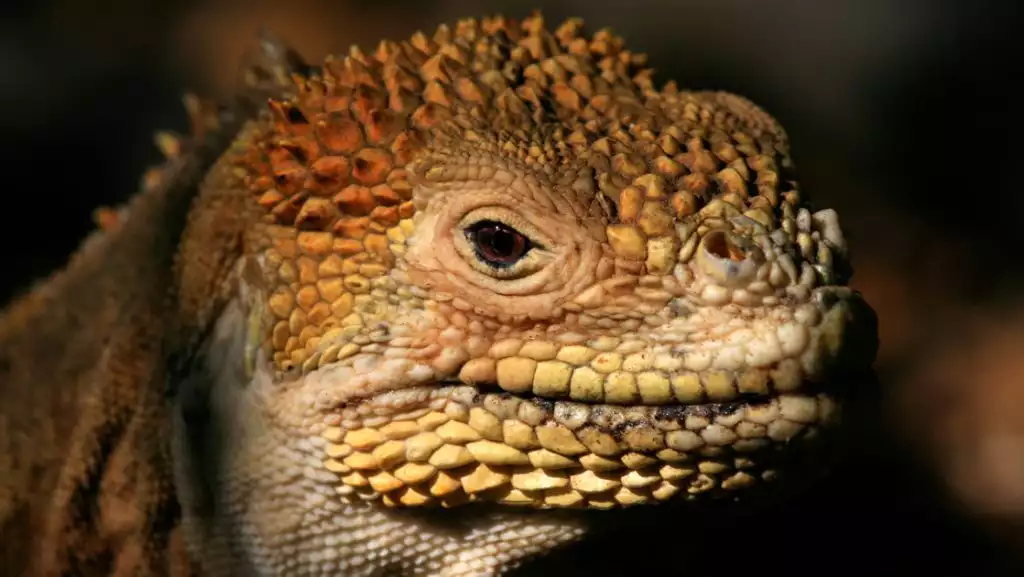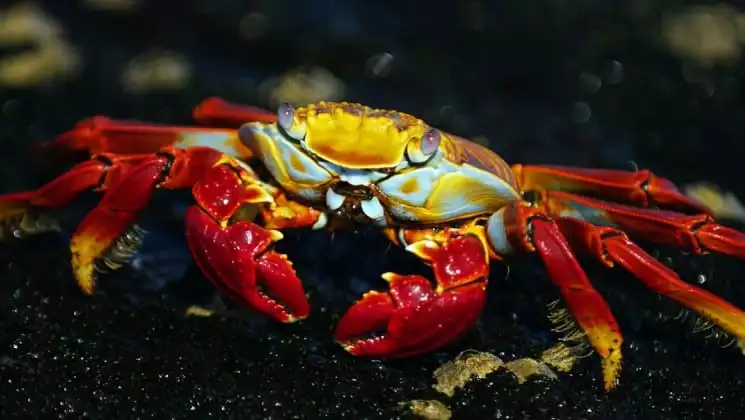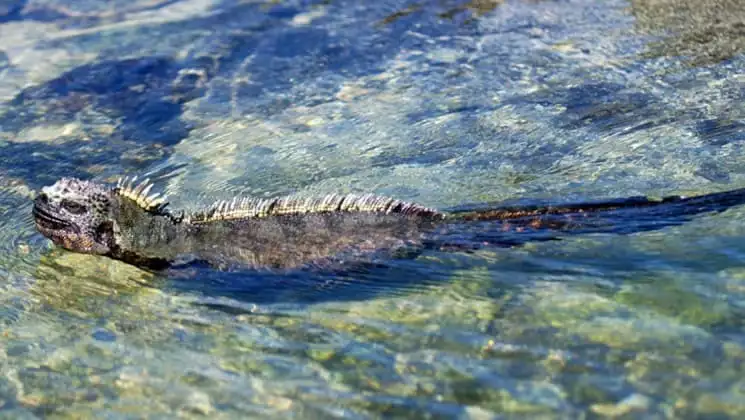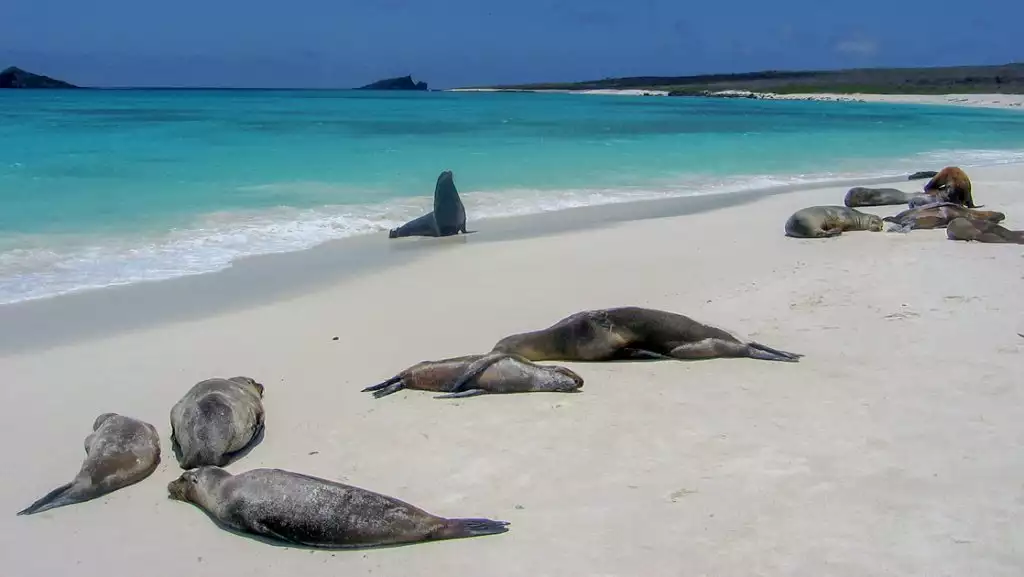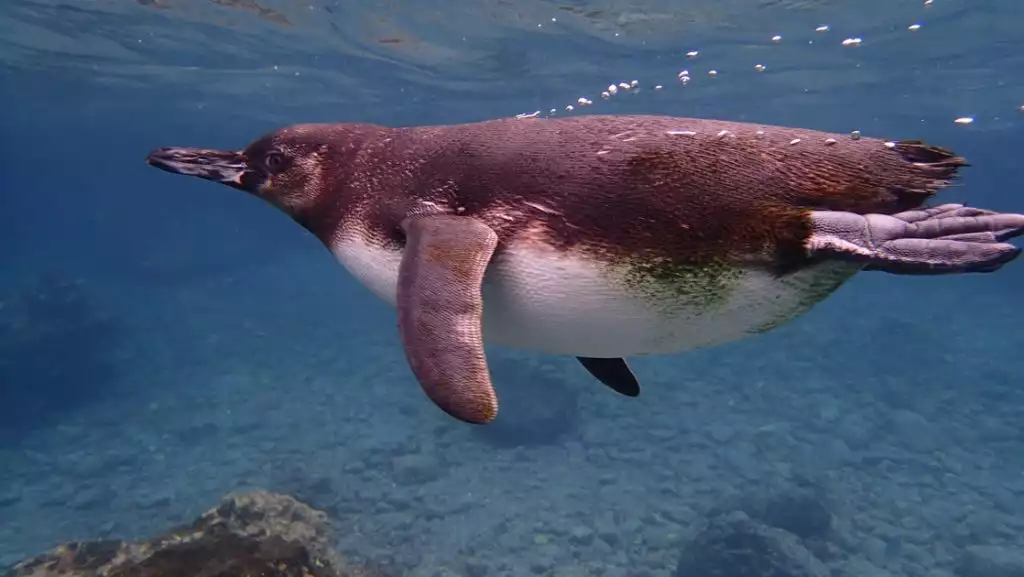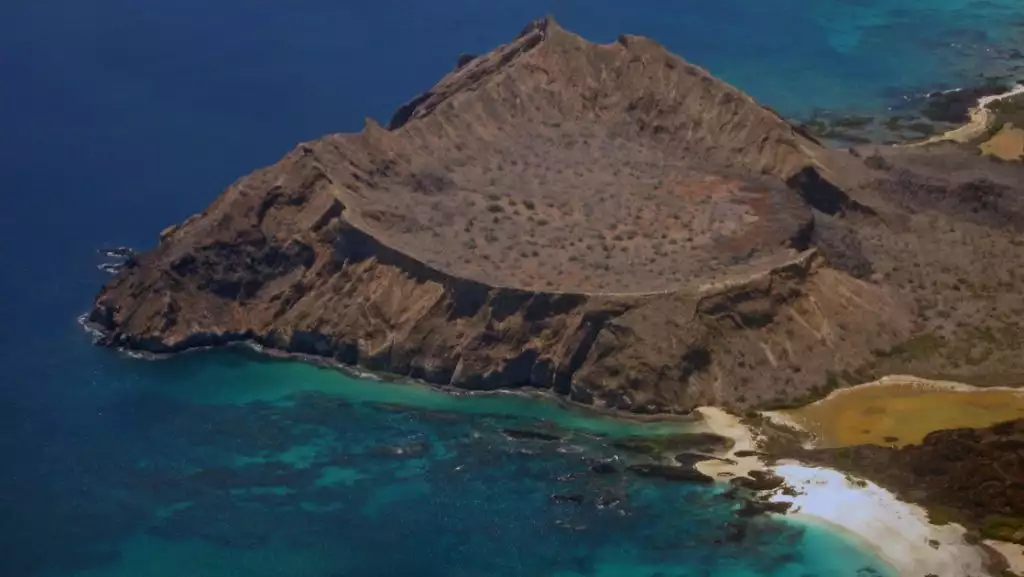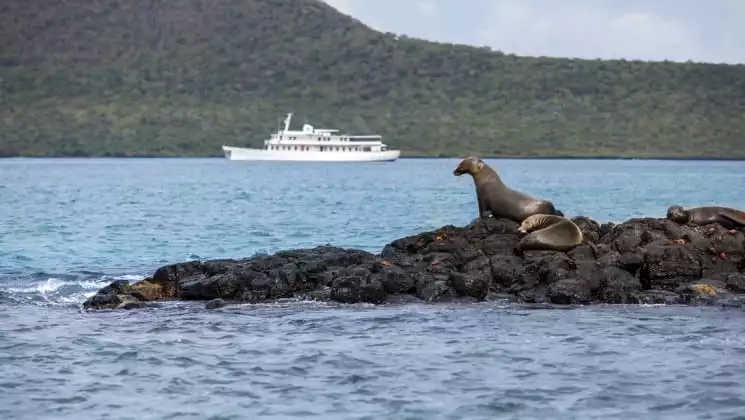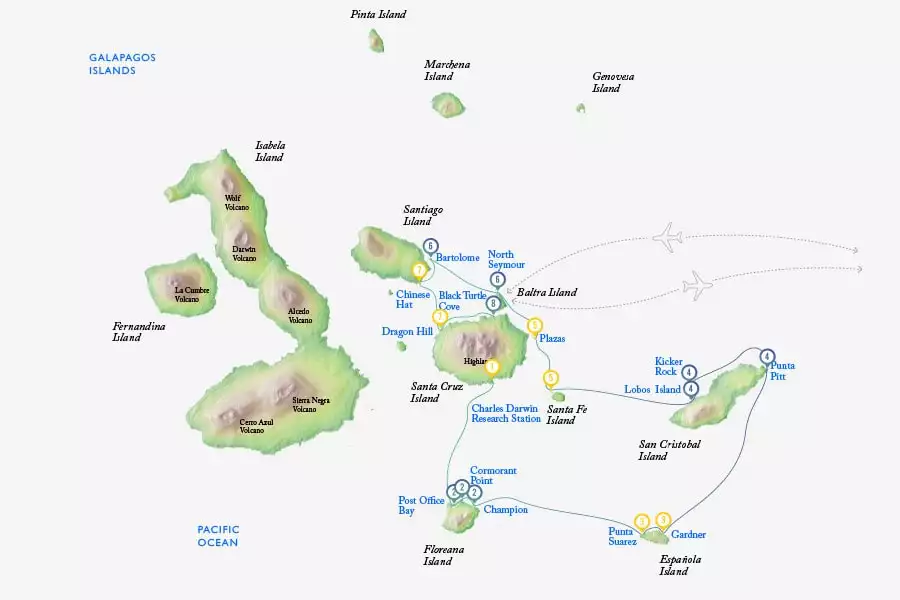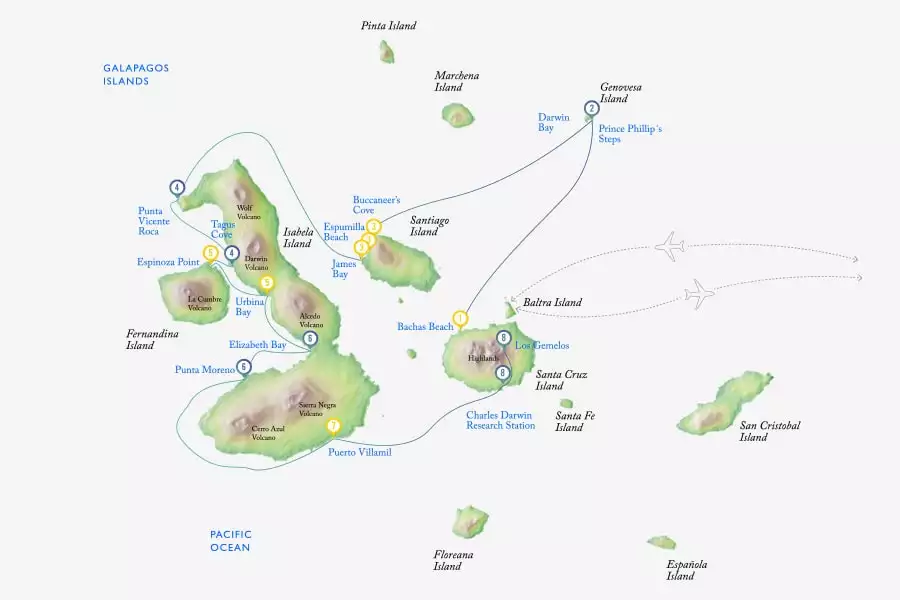Grace Galapagos Cruises
The 16-passenger Galapagos Grace was a wedding gift from Aristotle Onassis to Prince Rainier and Princess Grace of Monaco, and it was on board this vessel where they spent their honeymoon getaway. Cruise back in time and lay back in luxury, enjoying one of the finest Galapagos luxury cruises available in the Galapagos Islands. The Grace boasts a high crew-to-passenger ratio, spacious cabins and stylish lines. The carefully selected professional and friendly naturalists aboard are the most knowledgeable in the region, with an average of 15 years of experience guiding on the islands. Travelers comment that the service on board this ship, coupled with the true feeling of a safari experience, is unlike anything that is currently offered in Galapagos.
Grace operates two unique 8-day Galapagos cruise itineraries, which can be combined into an all-encompassing 15-day cruise. We look forward to having you join us for the trip of a lifetime! Call today to inquire about a specific Galapagos Grace itinerary or to learn more about Galapagos Grace cruises.
Experience the full spectrum of Galapagos wildlife that made the islands famous and inspired Charles Darwin’s theory of evolution. Follow Darwin’s Trail along a West Galapagos Islands route, or go Beyond Darwin’s Footsteps along an East Galapagos Islands route; each itinerary has a bit of it all to visit a varied selection of islands. Both itineraries begin and end in Baltra. While landing sites are different, both trips also visit Santa Cruz, with opportunities to swim, snorkel, kayak, hike and enjoy panga rides.
Beyond Darwin’s Footsteps itinerary highlights include: Take in views of Kicker Rock. Leave (and take) a postcard from the barrel at Post Office Bay before hiking into a lava tube that leads to a swimming opportunity in a subterranean grotto. Spend a morning at the Charles Darwin Research Station to view giant tortoises and an endemic scalesia forest before free time in the port city of Puerto Ayora. Experience Floreana Island’s Peace Asylum and Devil’s Crown; San Cristobal’s Punta Pitt, Lobos Island and Kicker Rock; Santa Cruz’s Dragon Hill and stops at the islands of Santa Fe and South Plaza. Cap this Galapagos small ship cruise with a visit to Black Turtle Cove.
Following Darwin’s Trail itinerary highlights include: Be surrounded by the bustle of great frigatebirds and their puffball chicks, yellow-crowned herons and lava herons at Genovesa, known as “Bird Island.” Snorkel the nutrient-rich waters of Punta Vicente Roca on Isabela Island. Take in the green algae of Tagus Cove and hike around Darwin Lake for spectacular views. See the Monk and Elephant Rock tuff formations of Espumilla Beach. Spend time in the capital port town of Puerto Ayora and visit the giant tortoises and lava caves nearby. Search for the tropics-exclusive waved albatross. Immerse in Bachas Beach and Los Gemelos on Santa Cruz Island, and Elizabeth Bay and Punta Moreno on Isabela Island. End the trip with a visit to Los Gemelos with their surrounding scalesia forest, an excellent place to view some of Darwin’s famous finches along with the elusive and dazzling vermillion flycatcher.
Choose between two excellent 8-day itineraries, combine them for the complete 15-day tour, or consider making your own itinerary. Live like Princess Grace and charter the whole boat; at only 16 guests, she’s one of our favorites for private Galapagos yacht charters.
Read on for details about this trip, or learn more about AdventureSmith’s Galapagos cruises and Galapagos trips.

